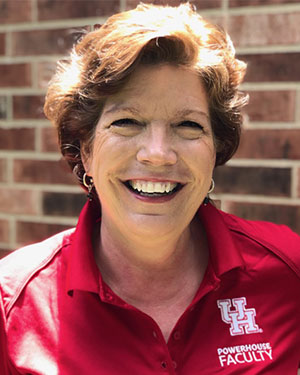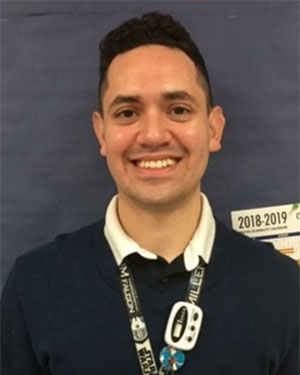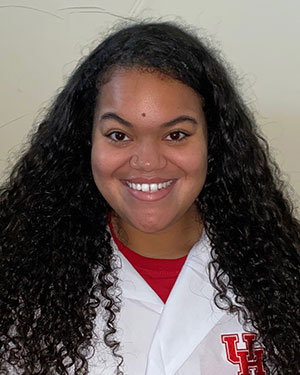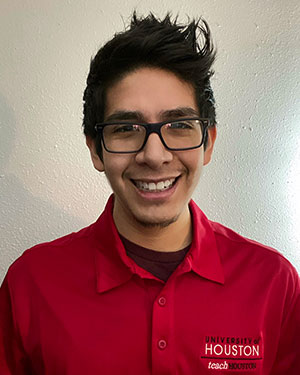Our Ever-Changing Planet

This module explores short-term and long-term changes to the environment caused by human activity and natural disasters.
After this module you will be able to:
- Construct a model of a watershed.
- Assess the impact of human activity in a watershed.
- Explain the impact of short-term and long-term environmental changes.
CONTENT TEKS
- 8.8 (C) Model the effects of human activity on groundwater and surface water in a watershed.
- 8.11(B) Explore how short‐ and long‐term environmental changes affect organisms and traits in subsequent populations.
NGSS
- MS-ESS3-3 Apply scientific principles to design a method for monitoring and minimizing a human impact on the environment.
- MS-ESS3-4 Construct an argument supported by evidence for how increases in human population and per-capita consumption of natural resources impact Earth’s systems.
Materials
Your watershed can be built using common household materials including but not limited to the list presented below which provides some ideas for materials that can be used.
- Paper
- Card stock paper or index cards
- Permanent markers
- Tape (masking, packing, or Scotch tape)
- Any container with edges (e.g., cookie sheet, paint tray, storage container lid)
- Parchment paper, wax paper, white trash bag or white plastic large enough to cover a 30” by 20” area
- Aluminum foil
- Toothpicks
- Small figurines/rocks/Legos (optional)
- Any type of bean, nut, or grain
- 1 bottle of food coloring or cooking oil
- 2 different spices (any spice will work)
- Any type of small seed or non-water-soluble spice
- Water
- Spray bottle or a container with small holes in it such as a water bottle or salt shaker
- Materials to elevate your tray such as blocks or books (if they are not water resistant, you can put them in a plastic bag or trash bag to protect against water damage)
Safety
- Be careful of food allergens.
- Be sure to clean up all spills.
- Do not ingest any materials.
- Markers and food coloring may stain skin and/or clothing.
- Small parts are a choking hazard.
Activity
Watch activity video below.
Steps
- Clear and clean off your workspace.
- Gather all of the necessary materials prior to starting.
- To view the step-by-step instructions for the activity presented in the video (above), download this PDF file.
- After completing your model, don’t forget to answer the Reflection Questions:
- What did you notice about the two models?
- What are some differences between the natural model and the human footprint model?
- How do human activities impact the environment they inhabit?
Dig Deeper
Read More
As you learned in the lesson, human activity and natural disasters will impact the environment. We discussed how short-term environmental changes occur rapidly with no time to adapt. In contrast, some changes can occur over long periods of time and can be caused by either humans or natural events. Long-term environmental changes will have consequences that are not visible immediately, such as extreme temperature fluctuations over millions of years, melting of glaciers, or the introduction of invasive species to an ecosystem. Examples of extreme temperature fluctuation are ice ages, which are particularly long, as in hundreds of billions of years! During these times, temperatures around the globe drop and large parts of the Earth become covered in ice. However, the opposite can occur. Temperatures can increase dramatically leading to continental glaciers slowly melting. Another long-term change can be caused by the introduction of invasive species in an ecosystem. Invasive species, when introduced to a new environment, can bring new diseases, reproduce rapidly, and spread quickly, eventually out-competing the native species for resources.
Watch This
Show What You Know
Meet Our Expert
Have you ever wondered what a real science lab looks like? Meet Ding-Shyue (Jerry) Yang, Ph.D., a STEM expert from University of Houston’s Department of Chemistry. He takes us on a tour of the research lab where he works. Dr. Yang originally became interested in STEM in junior high where he enjoyed math. It wasn’t until high school chemistry competitions that he shifted his focus to chemistry.
Meet The Teachers

Ramona Mateer
Program Director, teachHOUSTON STEM Interactive
Lecturer, teachHOUSTON, Department of Mathematics, University of Houston
Ramona, a University of Houston alumnus, earned a M.Ed. in Science Curriculum and Technology (University of Texas). She is a former junior high school science teacher and instructional coach. In her free time, she cycles, reads, and enjoys Nintendo Switch online gaming.

Carlos Perez
Biology Teacher, Cypress-Fairbanks ISD, Cypress Ridge High School, teachHOUSTON Alumnus, Biology Major, University of Houston College of Natural Sciences and Mathematics
Mr. Perez is a Biology teacher at Cypress Ridge High School. He graduated from the teachHOUSTON Program at the University of Houston. He always strives to make science fun and accessible to all students. In his free time, Mr. Perez enjoys learning fun facts about science, and he likes to spend time in nature.

Yolanda Sanchez
Biology, teachHOUSTON Preservice Teacher, University of Houston, College of Natural Sciences and Mathematics
Ms. Sanchez is a senior at the University of Houston majoring in Biology. She is part of teachHOUSTON, a program that prepares STEM majors, like her, to teach. Ms. Sanchez is super passionate about ecology, sustainability, and learning. She believes that everyone can be a scientist, and she is willing to help all her students to get there. In her free time, Ms. Sanchez enjoys being outdoors and going on walks with her dog, Pepper. Ms. Sanchez looks forward to being in the classroom and aspires to be a role model for younger generations.

Olivia Pittman
Biologyy, teachHOUSTON Preservice Teacher, University of Houston, College of Natural Sciences and Mathematics
Ms. Pittman is looking forward to taking Genetics and Evolution Biology this year, as an undergraduate at the University of Houston. Some of her favorite things to do range from culturing microorganisms in the lab to making her very own data graphics. When she has time away from her studies, she loves to online shop and watch her go-to reality TV shows. In the future, she hopes to have the chance to excite youth with the same concepts that drive her own interests in the ever-evolving field of science.

Nolan Nash
Mathematics, teachHOUSTON Preservice Teacher, University of Houston, College of Natural Sciences and Mathematics
Mr. Nash is an undergraduate Mathematics major and part of the Honors College at the University of Houston. Some things he’s looking forward to next year are learning more about why math works the way it does. He loves to work with numbers. From timing himself swimming laps to creating mathematical models that help predict the future, numbers are the name of the game when it comes to Mr. Nash.

Brian Gonzales
Biology, teachHOUSTON Preservice Teacher, University of Houston, College of Natural Sciences and Mathematics
Mr. Gonzales is an undergraduate at the University of Houston. As a Biology major, he enjoys learning about genetics and how the use of model organisms can help us learn more about diseases in humans. One of his favorite courses involved working with Drosophila melanogaster, a type of fly, to identify the nature and location of an unknown wing mutation.

Liandra Larsen
teachHOUSTON STEM Interactive Video Editor
Liandra is a Research Graduate Assistant for the teachHOUSTON Program. Currently, she’s pursuing her Ph.D. in Higher Education Leadership and Policy Studies at the University of Houston. Her research interests include improving the university experience for first-generation and transfer students. In her spare time, she enjoys dancing, binge-watching shows on Netflix, and overspending at Target.
- https://oceanservice.noaa.gov/facts/watershed.html
- https://drought.unl.edu/Education/DroughtforKids/DroughtEffects.aspx#:~:text=Environmental%20Impacts,their%20habitat%20can%20be%20damaged.&text=Increase%20in%20disease%20in%20wild,reduced%20food%20and%20water%20supplies
- https://www.yellowstonepark.com/things-to-do/wolf-reintroduction-changes-ecosystem
- https://geology.utah.gov/map-pub/survey-notes/glad-you-asked/ice-ages-what-are-they-and-what-causes-them/
- https://www.youtube.com/watch?v=ur4I8tYnxP4
- https://www.youtube.com/watch?v=1vlHS0_32eI
- https://www.latimes.com/local/lanow/la-me-ln-yosemite-northern-california-storm-20180408-story.html
- https://climate.nasa.gov/
- https://sciencing.com/oil-spill-affect-environment-4616883.html
- https://link.springer.com/chapter/10.1007%2F978-3-540-69970-5_31
- https://www.fs.fed.us/outernet/pnw/research/fire/fire-effects.shtml#:~:text=It%20plays%20a%20key%20role,greenhouse%20gas%E2%80%94into%20the%20atmosphere.
- https://www.nwf.org/Educational-Resources/Wildlife-Guide/Threats-to-Wildlife/Invasive-Species#:~:text=Invasive%20species%20can%20change%20the,important%20habitat%20for%20native%20wildlife
- https://www.youtube.com/watch?v=ysa5OBhXz-Q
- https://www.pbs.org/wgbh/nova/article/impact-invasive-species/
- https://www.learntoconserve.com/static/media/Itron-Fall2019-Classroom_Activities-Calculate-Ecological-Footprint.9430ddbb.pdf